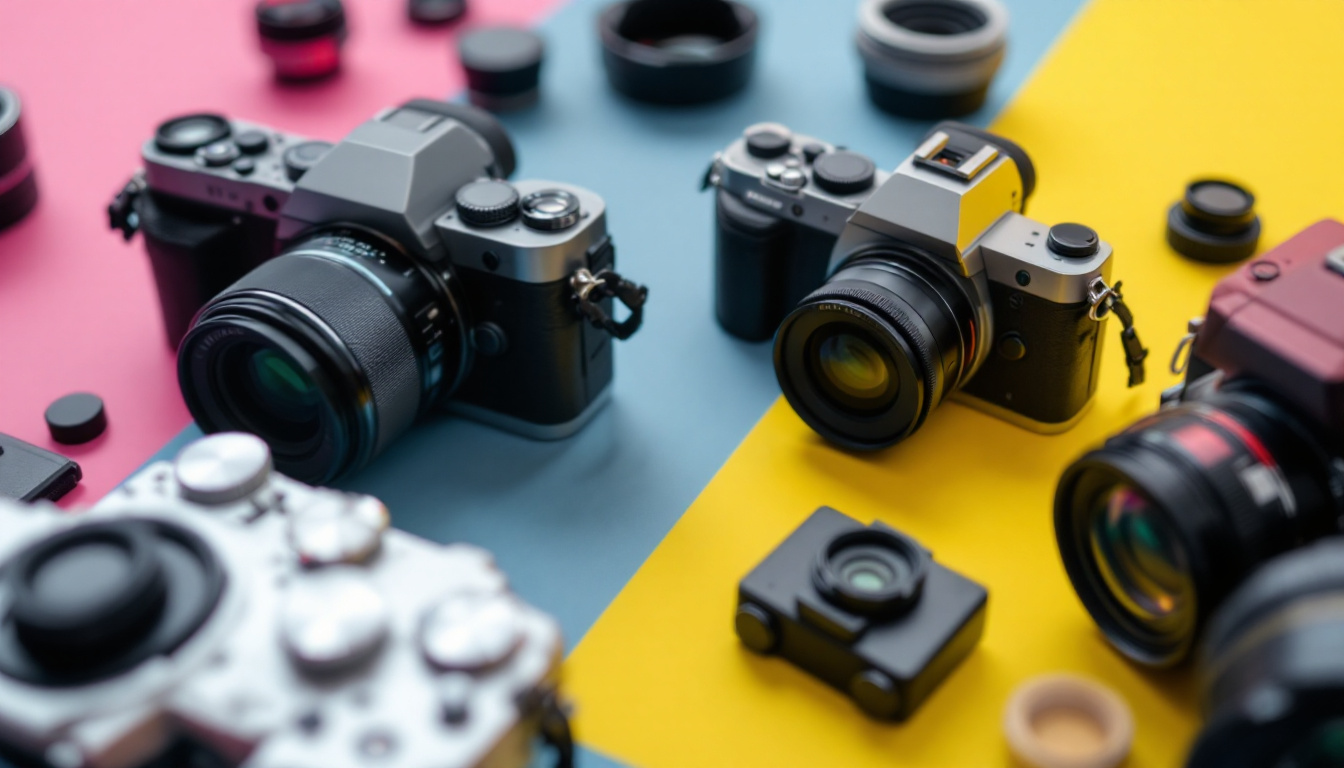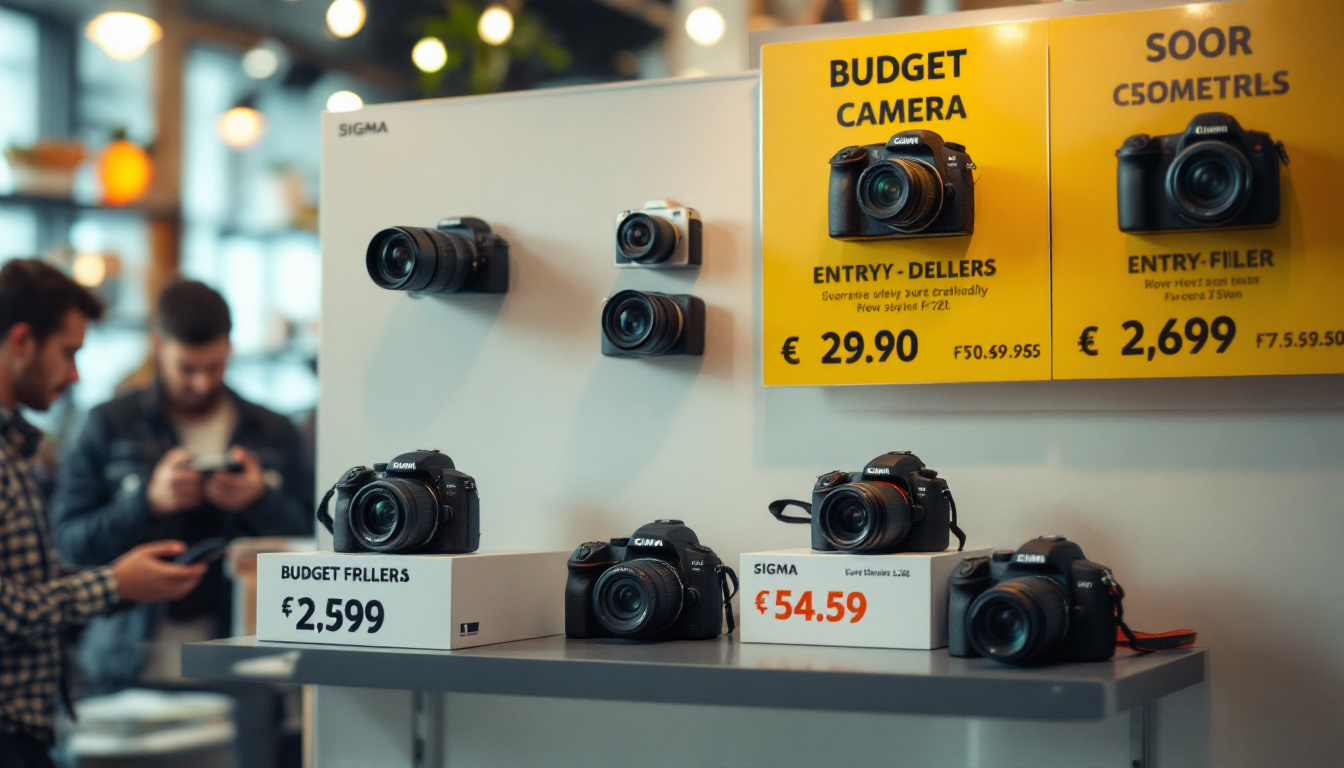Choosing the best camera for photography can be a daunting task, especially with the plethora of options available in today’s market. Whether you are a beginner looking to explore the world of photography or a seasoned professional seeking to upgrade your gear, understanding the key features and specifications of different cameras is crucial. This guide delves into various types of cameras, their features, and what makes them stand out, helping you make an informed decision.
Understanding Different Types of Cameras
DSLR Cameras
Digital Single-Lens Reflex (DSLR) cameras have long been the choice for professional photographers due to their versatility and superior image quality. They feature interchangeable lenses, allowing photographers to adapt to different shooting conditions and styles. DSLRs are known for their optical viewfinders, which provide a clear and accurate representation of the scene.
One of the significant advantages of DSLRs is their robust build and extensive battery life, making them ideal for long shoots. They also offer a wide range of manual controls, giving photographers the flexibility to fine-tune their settings for the perfect shot. However, DSLRs can be bulky and heavy, which might not be ideal for travel or casual photography.
Mirrorless Cameras
Mirrorless cameras have gained popularity in recent years due to their compact size and advanced technology. Unlike DSLRs, they do not have a mirror mechanism, which allows for a lighter and more portable design. Mirrorless cameras offer electronic viewfinders and often come with features like in-body image stabilization and fast autofocus systems.
These cameras are excellent for video recording as well, often providing 4K capabilities and superior video autofocus. The lack of a mirror also means less noise during shooting, which is beneficial in quiet environments. However, mirrorless cameras may have shorter battery life compared to DSLRs, and their lens options, while growing, are not as extensive.
Compact Cameras
Compact cameras, also known as point-and-shoot cameras, are perfect for those who prefer simplicity and convenience. They are small, lightweight, and easy to use, making them ideal for everyday photography and travel. Many modern compact cameras come with impressive zoom capabilities and advanced features like Wi-Fi connectivity and touchscreens.
While compact cameras may not offer the same level of image quality or manual control as DSLRs or mirrorless cameras, they are perfect for quick snapshots and casual photography. They are also more affordable, making them a great choice for beginners or those on a budget.
Key Features to Consider
Sensor Size and Resolution
The sensor size is one of the most critical factors affecting image quality. Larger sensors typically produce better images, especially in low-light conditions. Full-frame sensors, found in high-end DSLRs and mirrorless cameras, offer superior image quality and depth of field control. APS-C and Micro Four Thirds sensors are smaller but still provide excellent quality for most photography needs.

Resolution, measured in megapixels, determines the level of detail a camera can capture. Higher resolution is beneficial for large prints and cropping images without losing quality. However, it’s essential to balance resolution with other factors like sensor size and lens quality, as more megapixels do not always equate to better images.
Lenses and Accessories
The availability and quality of lenses can significantly impact your photography experience. DSLRs and mirrorless cameras offer a wide range of interchangeable lenses, from wide-angle to telephoto, allowing you to capture different perspectives and styles. When choosing a camera, consider the lens ecosystem and whether it aligns with your photography goals.
Accessories such as tripods, external flashes, and filters can enhance your photography capabilities. Ensure that the camera you choose is compatible with the accessories you plan to use. Some cameras also offer weather sealing, which is beneficial for outdoor and adventure photography.
Autofocus and Shooting Speed
Autofocus performance is crucial for capturing sharp images, especially in fast-paced environments like sports or wildlife photography. Look for cameras with fast and accurate autofocus systems, which often include features like face and eye detection. Mirrorless cameras are known for their advanced autofocus capabilities, making them a popular choice for action photography.
Shooting speed, or frames per second (fps), determines how many images a camera can capture in a burst. Higher fps is advantageous for capturing fast-moving subjects and ensuring you don’t miss the perfect moment. Consider your photography style and whether high-speed shooting is necessary for your needs.
Budget Considerations
Entry-Level Cameras
For beginners or those on a tight budget, entry-level cameras offer an excellent balance of features and affordability. These cameras provide essential functions and decent image quality, allowing new photographers to learn and grow their skills without a significant financial investment. Many entry-level models come with user-friendly interfaces and guided modes to assist in learning photography basics.

While entry-level cameras may lack some advanced features found in higher-end models, they are a great starting point for anyone looking to explore photography. Consider investing in a camera that offers room for growth, such as the ability to change lenses or add accessories as your skills develop.
Mid-Range Cameras
Mid-range cameras offer more advanced features and better build quality than entry-level models, making them suitable for enthusiasts and semi-professionals. These cameras often include improved autofocus systems, larger sensors, and more manual controls, providing greater creative freedom.
When choosing a mid-range camera, consider the types of photography you enjoy and whether the camera’s features align with your needs. Many mid-range models offer excellent value for money, providing professional-level capabilities without the high price tag of flagship models.
Professional Cameras
Professional cameras are designed for experienced photographers who demand the highest image quality and performance. These cameras feature full-frame sensors, robust build quality, and extensive manual controls, making them ideal for commercial and high-end photography.
While professional cameras come with a higher price tag, they offer unparalleled capabilities and are often used by photographers in demanding environments. If photography is your profession or a serious passion, investing in a professional camera can significantly enhance your work and provide the tools needed to excel in the field.
Conclusion
Determining the best camera for photography depends on various factors, including your experience level, photography style, and budget. Whether you opt for a DSLR, mirrorless, or compact camera, understanding the key features and specifications will help you make an informed decision. Consider what aspects of photography are most important to you and choose a camera that aligns with your goals and aspirations.

Ultimately, the best camera is one that inspires you to capture the world around you and helps you grow as a photographer. With the right camera in hand, you’ll be well-equipped to explore your creativity and capture stunning images that tell your unique story.
Now that you’re equipped with the knowledge to choose the best camera for your photography journey, it’s time to think about what comes after the shutter clicks. With Cliqora, streamline your workflow and elevate your photography business. Say goodbye to the hassle of hard drives and cumbersome file-sharing services. Experience super fast resumable uploads, effortless sharing with clients, and innovative features like AI face detection for private sharing. Manage your clients, contracts, and payments all in one place. Take the first step towards a more efficient photography business and register for early access to create your first project on Cliqora for free! Embrace the future of photography content management with Cliqora.



